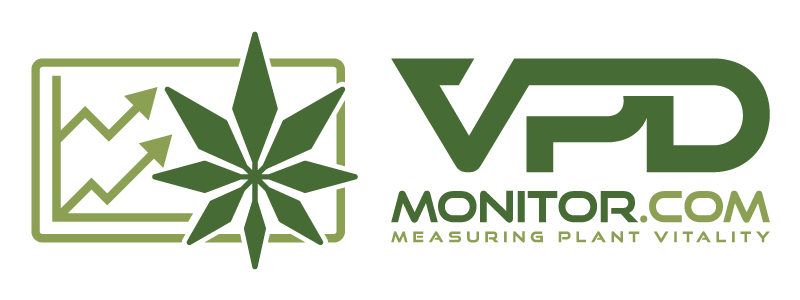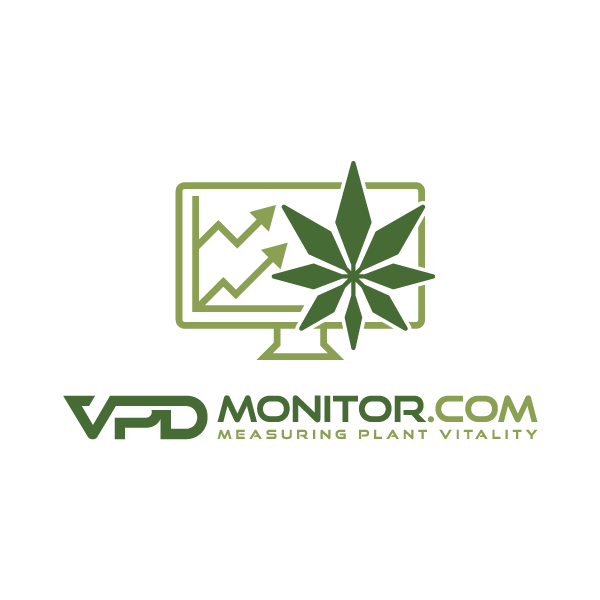Choose the product you need help with
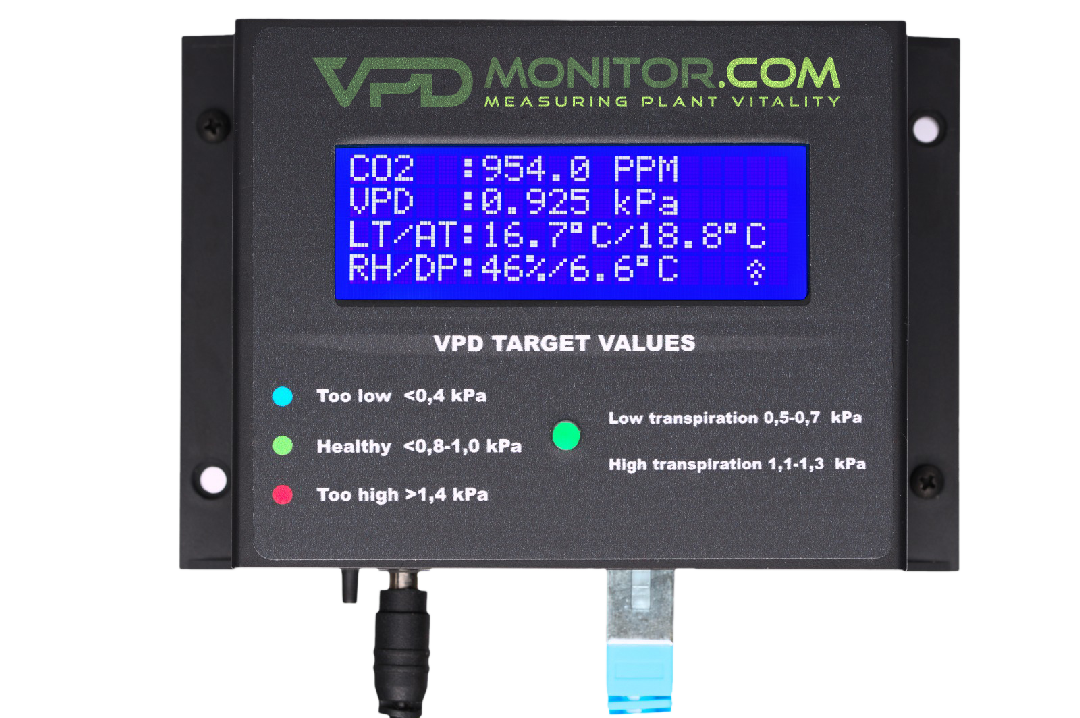
Vapour Pressure Deficit Monitor
Displays Leaf temp, Ambient temp, Rel humidity, VPD, dewpoint and CO2 (optional)
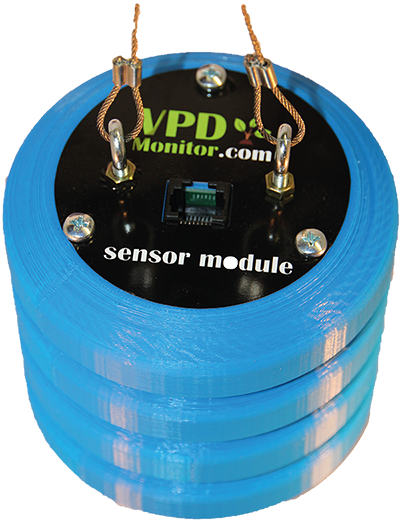
Vapour Pressure Deficit Sensor Module
Measures leaf temp, ambient temp, rel.humidity, and calculates VPD and dewpoint. Wide angle sensor for maximum footprint. (CO2 optional). Fits both HPS and LED grow rooms.
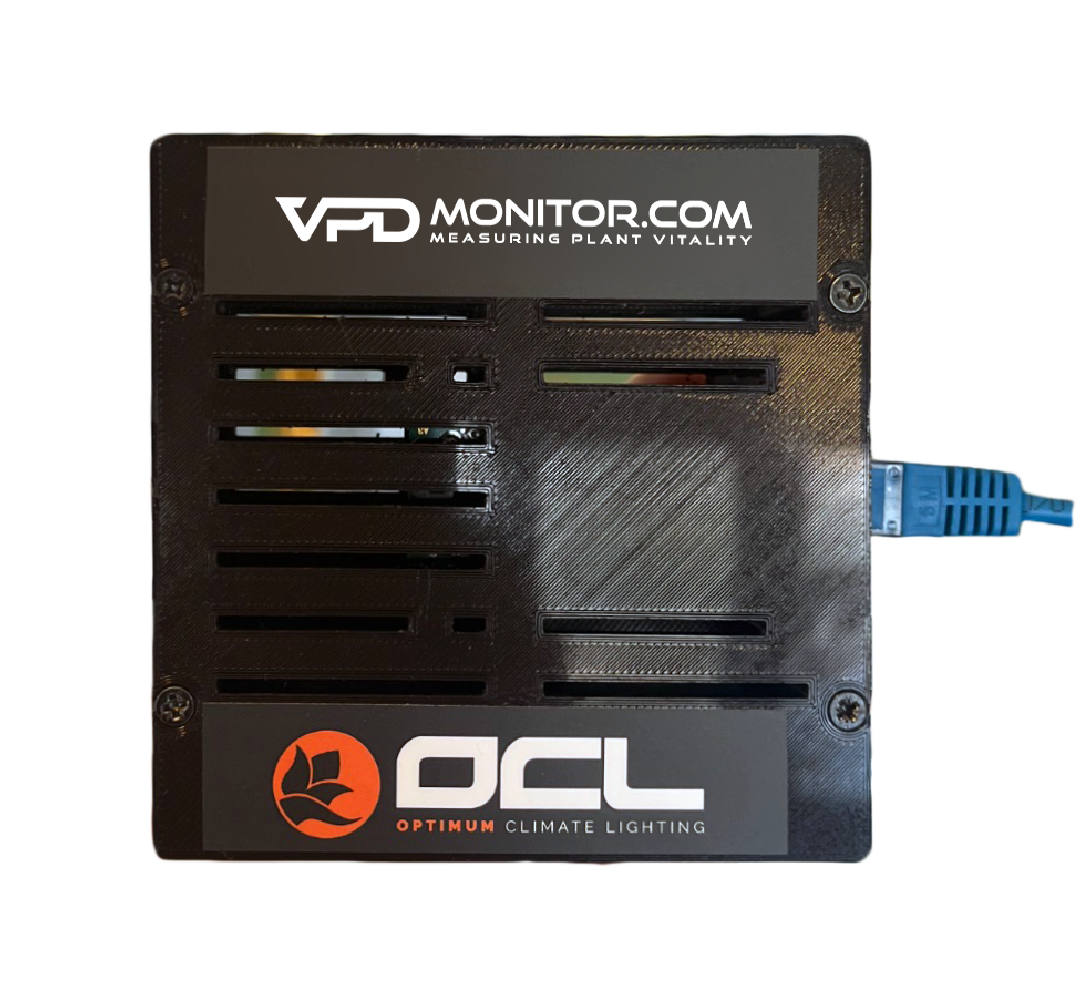
Vapour Pressure Deficit Sensor Module - OCL
Designed to fit between the OCL skwid lighting bars. Measures leaf temp. Ambient temp. Rel humidity and CO2. Calculates VPD and dewpoint. Ideal for multi layer operations.
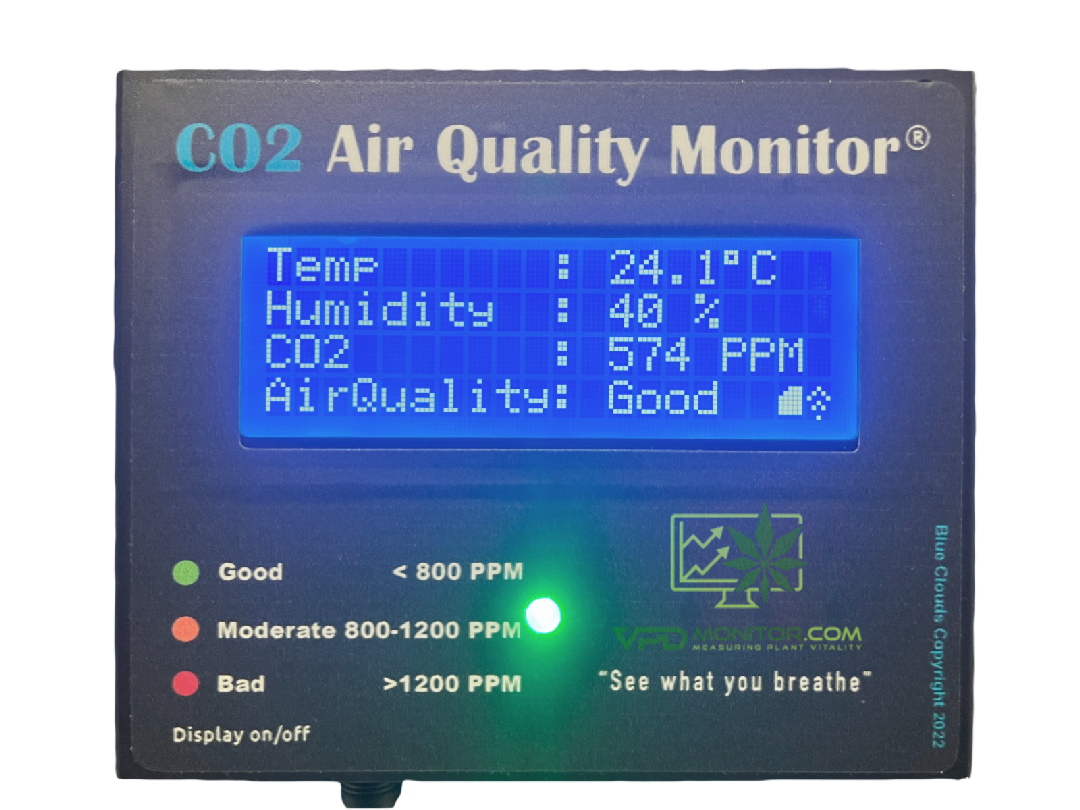
CO2 Monitor
(Stand-alone)
The CO2 monitor is designed for indoor Air Quality Measurement. “Healthy building” code states CO2 levels below 800 ppm is good, between 800-1200 ppm the air needs more ventilation and above 1200 ppm immediate action is required.
FAQ
What IS VPD?
You probably already have an idea of what VPD is, but this idea is likely outdated or misinterpreted. In horticulture, Leaf VPD (LVPD) is almost always referred to as just VPD, so we will too.
At some point, most indoor growers run into some mysterious plant growth problems ranging from symptoms resembling a nutrient deficiency while the nutrients are actually perfectly balanced and fresh, or slow growth, or powdery mildew, or a whole host of other problems. These can often be traced back to the VPD. If you correctly steer the VPD, it will create a better environment for your plants. This is a somewhat advanced concept that we will now explain in great detail. Once you understand VPD, you will see that your crop improves enormously.
The VPD measures the amount of ‘drying power’ of the air around the plant. Basically, it’s how much moisture the plant can lose to the atmosphere. You probably already know that the plant uses transpiration through its stomata to cool down. The plant will grow much more slowly or wilt if it cannot release moisture through its stomata.
If the VPD in is too low, moisture will collect on the leaves. If this is left for too long, the plants can become susceptible to fungi and pathogens, such as mildew or mould. The transpiration process in plants is similar to how we sweat.
If the VPD is too high, the plants may not be able to meet the evaporation demands put on them. The air dries them out too quickly. This will cause symptoms that resemble a nutrient deficiency.
However, if this condition only occurs a few hours a day, this might not be apparent from the plant’s growth itself.
What isn’t VPD?!
Back in 2011 when one of the industry leading companies introduced a VPD camera to the market, VPD was still unknown to many and not fully appreciated as much as it should have been. Currently the concept has sinked in, many successful companies are using it on a daily basis and the level of professionality has increased immensely.
Even Though VPD has become a bit of a buzzword, often the most important part is overlooked or oversimplified, making the grower think his climate is ok, when actually it can be totally off. That essential information is plant temperature!
Without Leaf Temp. no VPD
VPD has 3 variables; Ambient temp, Rel. Humidity and Leaf temp. Look at it as a triangle. The combination of the three has to be within that triangle.
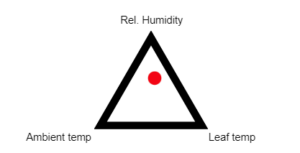
If you imply to have a VPD monitor/value without incorporating leaf temperature you are basically over simplifying the equation. So instead of a triangular equation, you only have a straight line (ambient temp and humidity) so you end up with a dot on a horizontal 1 dimensional line.
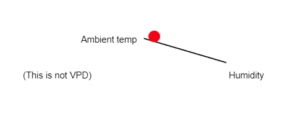
Wrong assumptions lead to bad decisions
Many growers think that the air temperature and plant temperature are virtually the same.
The plant will often be cooler than the room, and even more so when growing with LED. If the plant temperature is exactly equal to the room temperature, then the plant and room vapour pressures are equal. This is rarely the case. Most often, the leaves are between 0.5 and 4°C cooler than the room because they transpire. The evaporation causes the leaf to cool down. With a high VPD a lot of evaporation takes place and with a low VPD little.
This is directly related to the plant temperature!
While the Air VPD is important, we really want to focus on what happens to the plant. That means we want to know the Leaf VPD.
‘For this reason, the use of a plant temperature camera is essential to obtain a good VPD value’!
To get the Leaf VPD reading, we developed a plant temperature camera that covers a large surface area. An infrared thermometer is not suitable for accurate plant temperature measurements because it measures only a very small area and is not tuned to the emissivity of the leaves, but is instead tuned to building materials.
VPD charts and online calculators
Using an (online) calculator without factoring leaf temperature is incorrect, not only because it is incomplete, but also because It can do more harm than good.
The reason for this is not just what we explained above. It is also a no-go because under LED the difference between the ambient and leaf temperature can be as much as 5-6 degrees Celsius, as where under HPS usually the difference lies between 1 and 2 degrees. VPD without leaf temperature is utterly unreliable!
The other major ‘thing’ about charts is that it’s a fixed value. VPD is volatile like moisture and will constantly change during the day. It can teach you important lessons about when to humidify your grow room, or not. And it can tell you when the plants endure stress because of a lack of water content in the soil.
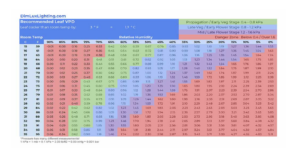
VPD cameras vs an infrared thermometer
As opposed to an infrared temperature metre, the plant temperature camera is made to measure the temperature with a wide field of view, and with an emissivity matched to that of plants. This ensures the most accurate measurement possible.
An infrared temperature metre is made to measure the temperature of the smallest possible spot diameter. This way, only the temperature of a single leaf can be measured, and not of a complete plant, or several plants. When measuring from a distance, measurements can also accidentally be taken from the lower leaf layers where less or no light reaches. The emissivity parameter of this type of metre is adjusted to building materials, and not to that of plants. For an accurate measurement, the result must be converted.
“The plant temperature camera also monitors continuously and does not just provide a snapshot”
About the infra red thermal sensor…
Can you measure VPD without leaf temperature?
To be honest?! NO! other vpdmonitors that do not measure leaf temperature are taking you for a fool. They use ambient temperature with a sensor that’s somewhere in-between the Canopy. But because of air circulation this method does not meet our standards…
How does the VPD-monitor measure canopy temperature?
The sensor module has a built-in advanced infrared temperature sensor. If you hang the sensor-module 1 meter (3 feet) above the canopy, you will get the most accurate reading.
Location, Location, Location…
Where and how to hang the sensor to get proper measurements?
Choose a location that represents your crop. That means somewhere where the height is average, the canopy is closed and not close to an air intake, heater or too close to a humidifier.
Always make sure to use enough circulation to ensure representable data. On the homepage you can find a document called “connecting the dots” In there you can find reading material about circulation and how it influences VPD.
Last but not least, make sure it doesn’t get wet! The PCB inside the sensor module is not water resistant! So if you have to spray your crops for whatever reason, cover the sensor module or replace it temporarily….
I have a VPD value now what?!
So you have followed our guidelines, and you see the importance of VPD. Now how are you going to turn these plant vitality readings into happy crops?
VPD value too low?
Assuming the temperature is meeting your setpoint, and the lighting is at an optimum height, the best way to raise the VPD value is too lower the humidity. Raising the temperature would be an alternative option if dehumidifying is not possible.
VPD value too high?
Your light fixtures are at the required height and the temperature is where it should? Nothing else to do than raise humidity! don’t be afraid to go towards 75% if you have to. The critical point is around 80% don’t go over or you risk fungi related trouble
My VPD value is too high in the daytime and too low at night. Now what?
Invest in proper, and I mean serious humidifying equipment for the daytime and de-humidifying equipment in the night time.Make sure they don’t both operate at the same time. Switch the humidifier for instance with lights and the de-humidifier with a heater. If you run an air-conditioned operation, de-humidifying should not be a problem…
Restrictions, technical or by design…
Can I extend the utp cable?
Yes, If you use cat5e cable, you can use up to 20 meters (7 feet) of cable.
I don’t get a reading, or strange signs appear on the screen
Make sure you use UTP cable as described above and check they are clean and properly fitted in their corresponding connectors. Finally reboot the display unit by turning the power on and off…. Yes it is that simple.
How should the plant temperature be measured?
The plant temperature should be measured over an as large a leaf surface as possible so that a good average temperature is measured.
The parts of the plant that need to be measured are the parts that receive the most light from the assimilation lighting. Mounting the sensor unit at the same angle as the assimilation lighting results in the most accurate measurements.
After all, photosynthesis takes place where the most light is absorbed.
Please fill the bellow form and get in touch
For other questions please use one of the following mail adresses:
Wholesalers/Distributors/resellers contact:
– Sales information: sales@vpdmonitor.com
Developers, IT/ Integration specialists, API questions:
– Technical information: henk@vpdmonitor.com
Expositions, inquiries, press related questions:
– General information: info@vpdmonitor.com
Tips, Growroom related technical questions:
–Bushdoctor: gabe@vpdmonitor.com
Anything legal, contact:
– Legal information: legal@vpdmonitor.com
